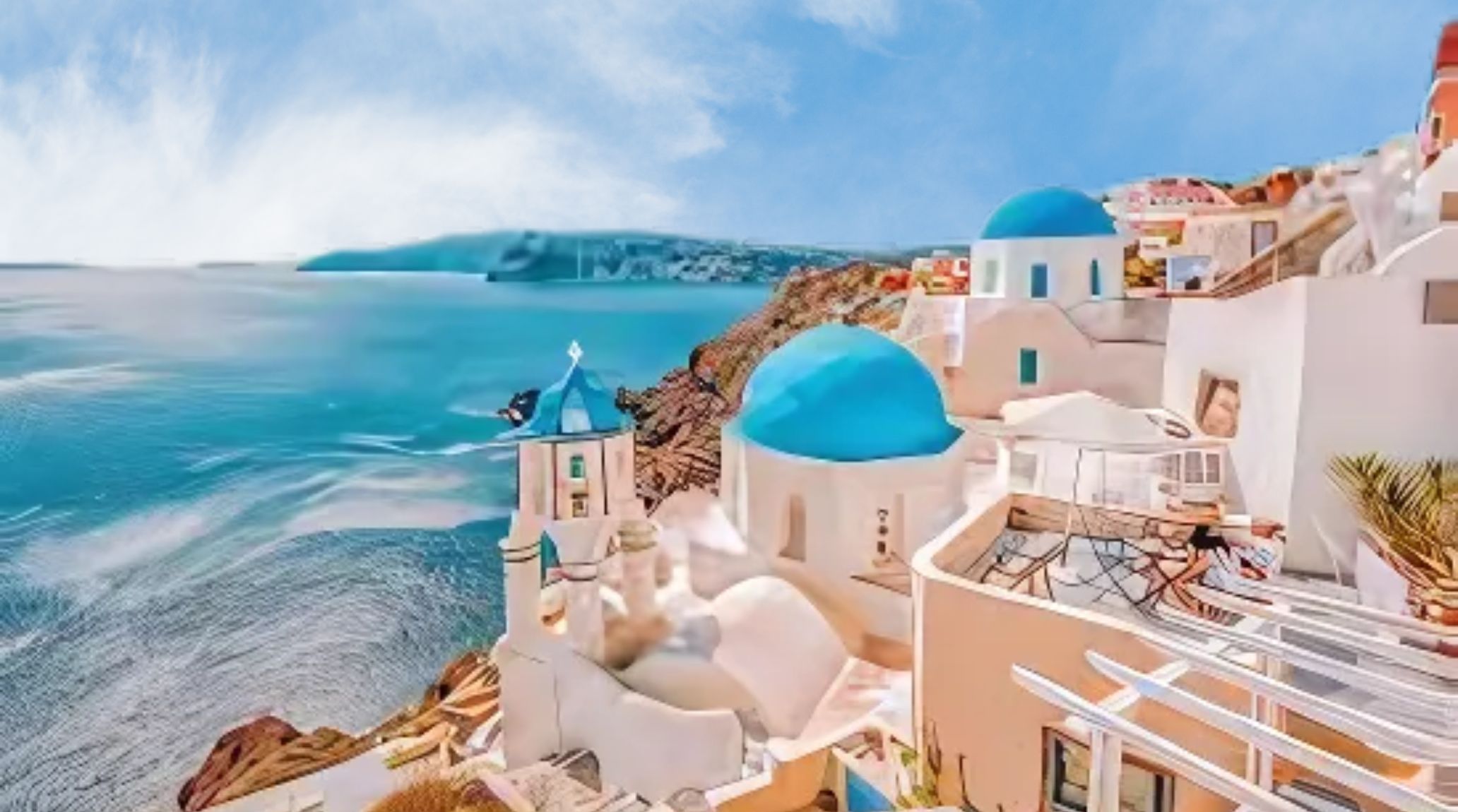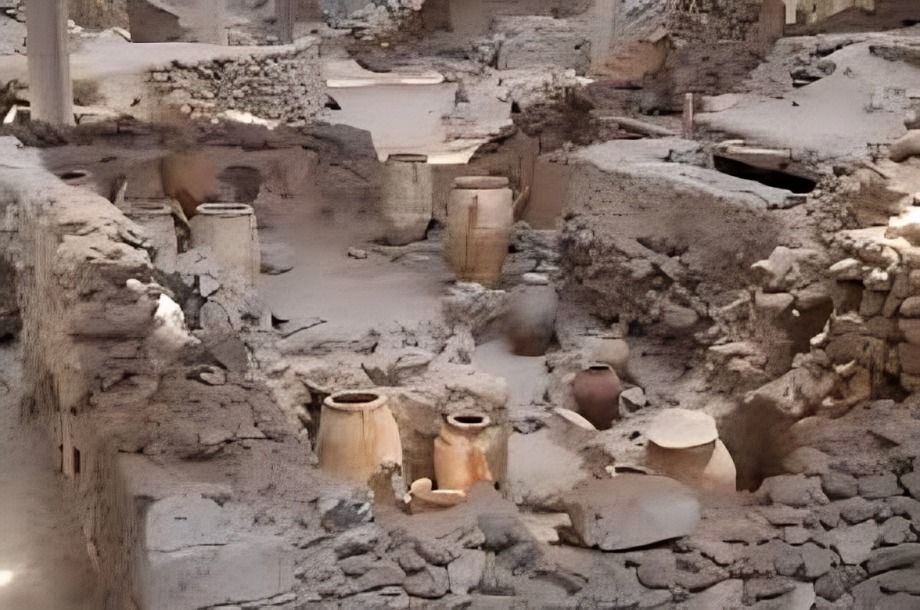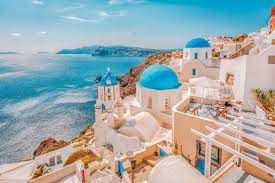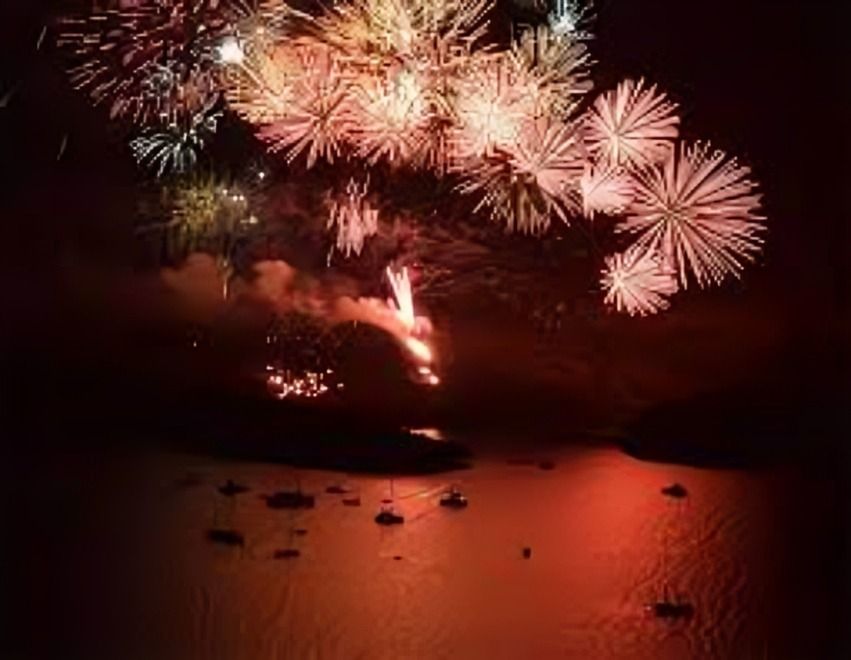
“
Santorini, known for its breathtaking sunsets and iconic blue-domed churches, is one of the most beautiful islands in Greece. Famous for its volcanic history, crystal-clear waters, and stunning landscapes, this island attracts travelers from around the world. But there’s more to Santorini than meets the eye. In this blog, we will explore 20 incredible facts about Santorini that showcase its rich history, vibrant culture, and unforgettable beauty. Join us as we dive deeper into what makes this island a truly spectacular destination.1
1
”
Santorini, located in the Aegean Sea, is famous for its breathtaking sunsets, iconic whitewashed buildings, and blue domes. As part of Greece’s Cyclades, it blends natural beauty with rich cultural history.1
The crescent shape resulted from a massive volcanic eruption in 1600 BCE, forming its iconic caldera and giving rise to one of the world’s most breathtaking geological formations and views. 2
Its population is 15,550, according to the 2011 census, but it swells significantly during summer, especially in July and August. Despite its small resident population, over 2 million tourists visit annually. 3
Red Beach, formed by volcanic activity, showcases Santorini’s diverse geology with red cliffs meeting blue waters, while black sand beaches like Kamari provide a striking contrast to traditional Mediterranean coastlines. 4

Akrotiri, an ancient Minoan city preserved under volcanic ash, offers remarkable archaeological insights into life before 1600 BCE, featuring frescoes, pottery, and advanced urban planning techniques.
Santorini sunsets, especially in Oia, are legendary, drawing crowds worldwide as the caldera bathes in hues of gold and pink, making it a must-see destination for romance and photography enthusiasts. 5
Traditional “yposkafa” cave houses, carved into volcanic rock, showcase Santorini’s architectural ingenuity, offering natural insulation and resilience against the island’s challenging environment while blending seamlessly into its rugged landscape. 6
The Nea Kameni islet features active geothermal vents and hot springs, providing visitors with a rare opportunity to swim in warm volcanic waters while exploring the remnants of Santorini’s active volcanic past. 7

Pyrgos, a less touristy Santorini village, preserves medieval charm with narrow alleys, a hilltop castle, and panoramic island views, offering a tranquil escape from bustling Oia and Fira.
Santorini was once home to the Minoan civilization, flourishing around 3,500 years ago. The Akrotiri archaeological site reveals well-preserved ruins, providing insight into the advanced lifestyle and culture of its ancient residents. 8
Santorini, despite its dry climate and volcanic soil, is famous for wine production. The island's unique "kouloura" vine-growing technique, involving circular vine training, shields crops from harsh winds, offering rich, flavorful wines. 9
Venetian influence is evident in Santorini’s architecture, including Skaros Rock, a fortress built to defend against pirates and once home to a thriving settlement during the island’s medieval period. 10
The Akrotiri Lighthouse, built in 1892, offers visitors one of Santorini’s most serene spots, combining history and breathtaking sunset views away from the island’s more crowded attractions. 11
Santorini’s fava beans and domatokeftedes tomato fritters highlight its culinary heritage, featuring ingredients grown in volcanic soil, resulting in unique flavors revered in Greek cuisine worldwide. 12

Every summer, Santorini hosts the Ifestia Festival, reenacting its volcanic eruption with fireworks over the caldera, blending history and celebration in a dazzling display of lights and storytelling.
The Archaeological Museum of Thera houses significant artifacts, including pottery, tools, and frescoes, which provide a window into Santorini’s ancient civilization and its adaptation to volcanic landscapes. 13
Santorini’s windmills, especially in Oia, are remnants of its agricultural past, symbolizing the island’s resourcefulness and connection to natural elements like wind and water for energy and productivity. 14
During peak tourism season, Santorini’s population grows exponentially, welcoming millions annually, solidifying its status as one of the most visited and economically vital destinations in Greece. 15
Santorini's caldera, a striking natural feature, formed from a massive volcanic eruption. The eruption caused the island's center to collapse, creating a large, crescent-shaped basin that defines the island's unique landscape. 16
Santorini's cuisine includes unique dishes like "Santorinian Fava," a creamy yellow split pea puree, and "Tomatokeftedes," fried tomato balls with local herbs. Participating in a Santorini Cooking Class offers hands-on experience. 17


